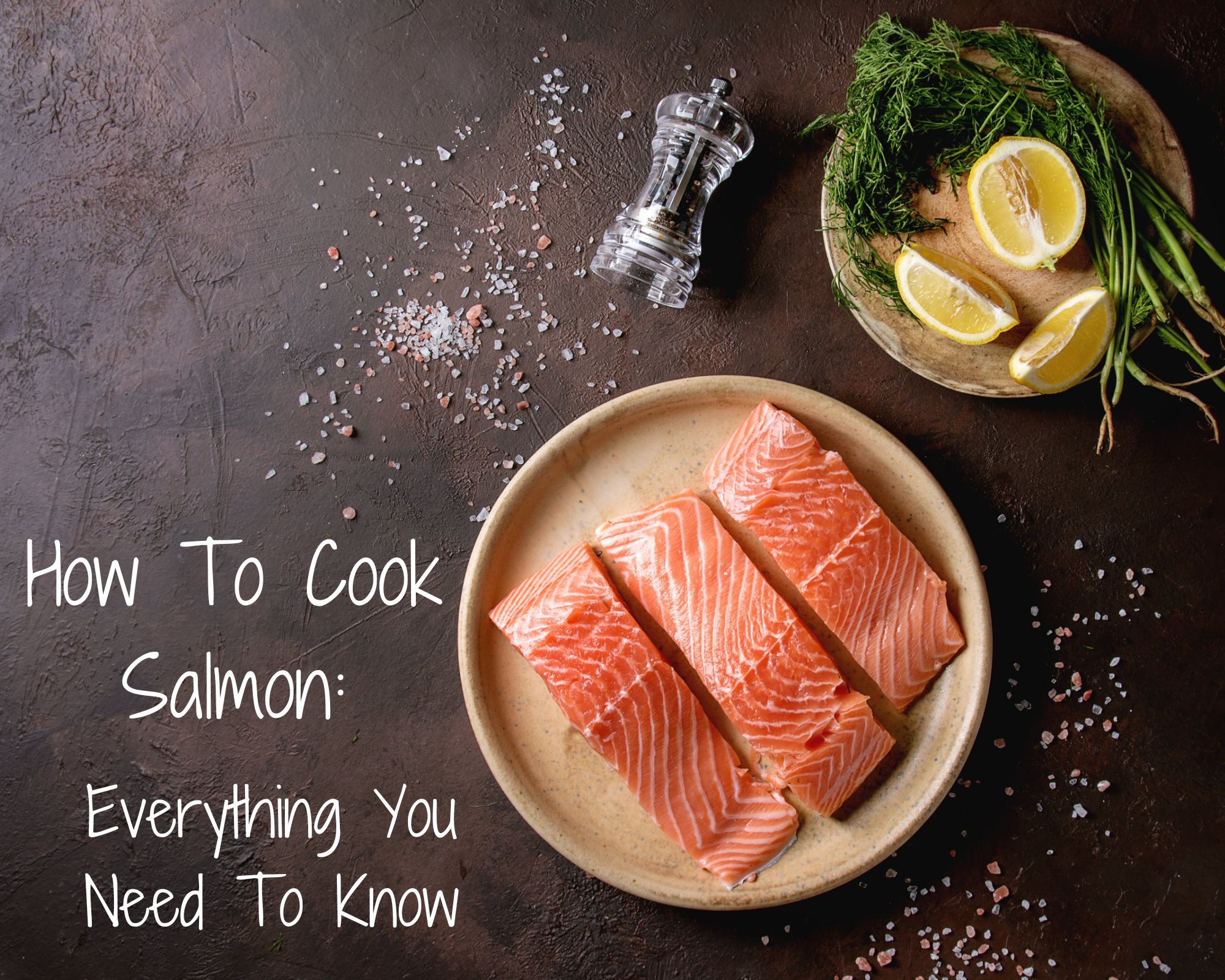Salmon is one of those versatile fish that can be cooked in so many ways, it’s almost overwhelming. But fear not, fellow kitchen-lovers! We’re here to guide you through the wonderful world of salmon cooking techniques, from pan-searing to grilling to baking and so much more.
Choosing the Right Salmon
Before we dive into the cooking methods, let’s talk about picking the perfect salmon.
– Look for fillets that are firm, moist, and have a fresh, ocean-like scent.
– Wild-caught salmon is often preferred for its flavor and sustainability, but farm-raised can be just as tasty if sourced responsibly.
– Atlantic salmon is often farm raised and a more affordable option. It’s deliciously fatty and forgiving when grilling and baking.
– Sockeye, king, and chinook salmon are slightly more expensive, but yield a more complex flavor and are most often wild caught.
Preparing Your Salmon
Regardless of the cooking method, it’s essential to properly prepare your salmon. Start by patting the filets dry with paper towels to ensure a crispy exterior. If your salmon has skin, leave it on – it adds flavor and helps retain moisture during cooking (not to mention, it’s much easier to remove post cooking if you feel strongly about it being gone). Season your salmon generously with salt and pepper, and feel free to get creative with additional herbs and spices, like Italian seasoning, cajun spice blends, or keep it simple with lemon and dill.
Cooking Techniques
Pan-Searing: Pan-searing is a quick and delicious way to cook salmon, resulting in a crispy skin and tender flesh. Start by heating a skillet over medium-high heat and adding a bit of oil – we prefer olive oil or butter for its rich flavor. Once the pan is hot, carefully lay the salmon skin-side down and cook for about 4-5 minutes, until the skin is golden brown and crispy. Flip the salmon and cook for an additional 3-4 minutes until it’s cooked through but still moist and tender. Serve immediately with your favorite sides.
Grilling
Fire up the grill for a smoky and flavorful salmon experience. Preheat your grill to medium-high heat and lightly oil the grates to prevent sticking. Place the seasoned salmon fillets directly onto the grill, skin-side down, and cook for about 4-5 minutes. Carefully flip the salmon using a spatula and continue grilling for another 3-4 minutes until it’s cooked to your desired doneness. Pro tip: For extra flavor, try grilling the salmon on a cedar wood plank or aluminum foil with some lemon slices and herbs.
Baking
Baking is a foolproof method for cooking salmon, resulting in moist and flaky fish every time. Preheat your oven to 375 degrees F (190 degrees C) and line a baking sheet with parchment paper or aluminum foil for easy cleanup. Place the seasoned salmon on the prepared baking sheet and bake for 12-15 minutes, depending on the thickness of the fillets, until the salmon flakes easily with a fork. Feel free to jazz up your baked salmon with a glaze or marinade for added flavor. Teriyaki sauce, mustard, balsamic glaze, or hot honey makes for a delicious addition to baked salmon.
Poaching
Poaching is a gentle cooking method that keeps salmon moist and infuses flavor. In a large skillet or saucepan, bring a mixture of water, white wine, lemon juice, and aromatics like garlic, herbs, and peppercorns to a simmer. Carefully add the seasoned salmon fillets to the poaching liquid and cook for 5-7 minutes until the salmon is opaque and cooked through. Remove the salmon from the liquid with a slotted spoon and serve with a drizzle of sauce or a squeeze of lemon.
Internal Temperature
No matter which cooking method you choose, it’s essential to cook salmon to the right internal temperature to ensure both safety and optimal flavor. The FDA recommends cooking salmon to an internal temperature of 145 degrees F (63 degrees C). Use a meat thermometer inserted into the thickest part of the salmon to check for doneness.
Tips and Tricks
– Don’t overcrowd the pan or grill when cooking salmon. Give each fillet enough space to cook evenly and develop a nice crust or grill marks.
If you’re unsure if your salmon is cooked through, gently press on the fillet with a fork. If it flakes easily and is opaque throughout, it’s done.
Experiment with different seasonings and marinades to keep things exciting. From citrusy marinades to spicy rubs, the possibilities are endless.
When in doubt, remember that less is often more when it comes to seasoning salmon. Let the natural flavor of the fish shine through.
Cooking salmon doesn’t have to be intimidating. With the right techniques and a bit of practice, you’ll be cooking up restaurant-quality salmon dishes in no time. Whether you prefer the crispy skin of pan-seared salmon or the smoky flavor of grilled salmon, there’s a cooking method for everyone. So grab your apron, fire up the stove or grill, and let’s get cooking!
